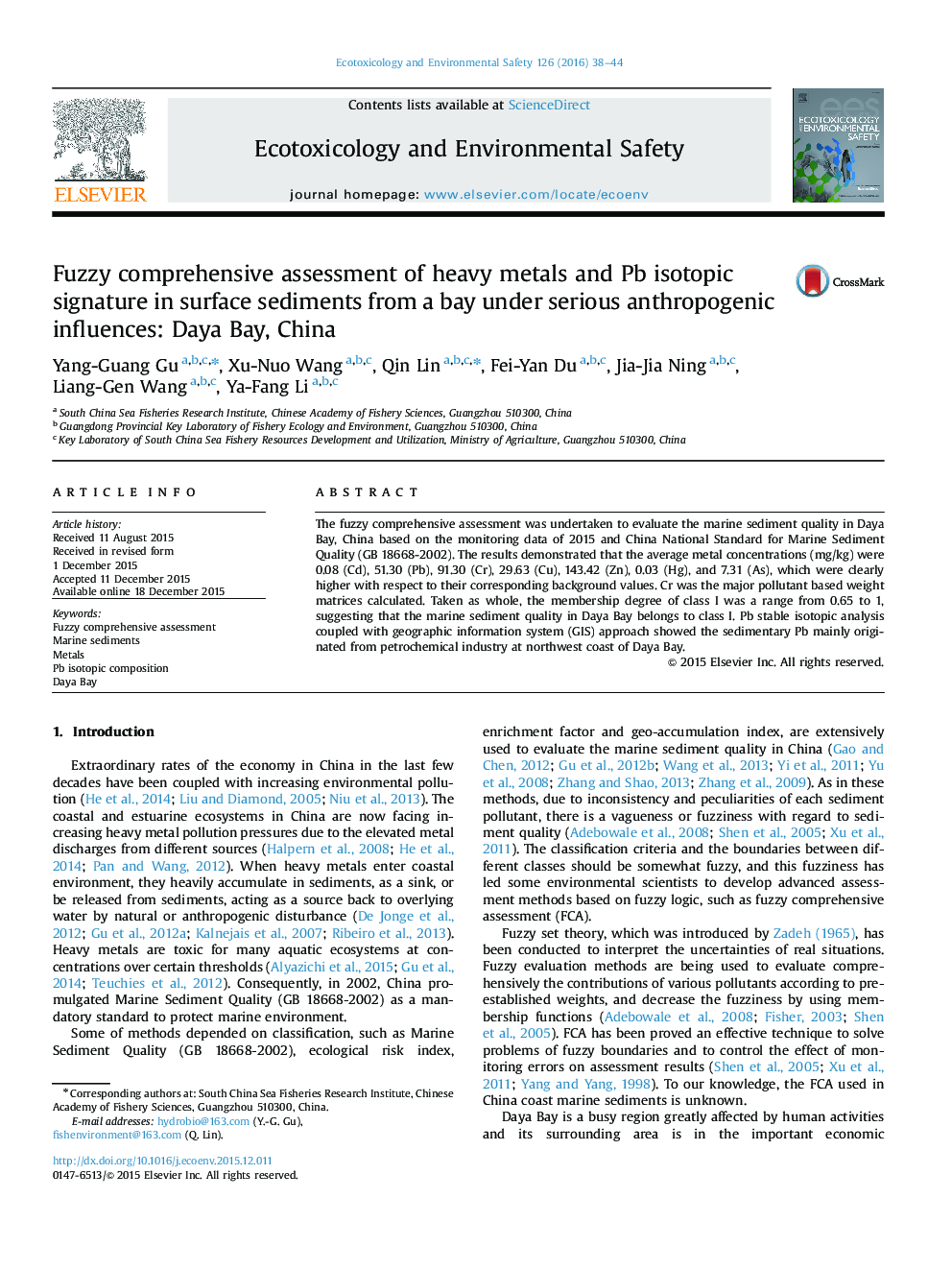| Article ID | Journal | Published Year | Pages | File Type |
|---|---|---|---|---|
| 4419219 | Ecotoxicology and Environmental Safety | 2016 | 7 Pages |
•Sedimentary heavy metals in Daya Bay were studied using fuzzy comprehensive assessment and Pb stable isotopic analysis.•Cr was the major pollutant based weight matrices calculated.•The marine sediment quality in Daya Bay belongs to class I.•Pb mainly originated from petrochemical industry.
The fuzzy comprehensive assessment was undertaken to evaluate the marine sediment quality in Daya Bay, China based on the monitoring data of 2015 and China National Standard for Marine Sediment Quality (GB 18668-2002). The results demonstrated that the average metal concentrations (mg/kg) were 0.08 (Cd), 51.30 (Pb), 91.30 (Cr), 29.63 (Cu), 143.42 (Zn), 0.03 (Hg), and 7.31 (As), which were clearly higher with respect to their corresponding background values. Cr was the major pollutant based weight matrices calculated. Taken as whole, the membership degree of class I was a range from 0.65 to 1, suggesting that the marine sediment quality in Daya Bay belongs to class I. Pb stable isotopic analysis coupled with geographic information system (GIS) approach showed the sedimentary Pb mainly originated from petrochemical industry at northwest coast of Daya Bay.
